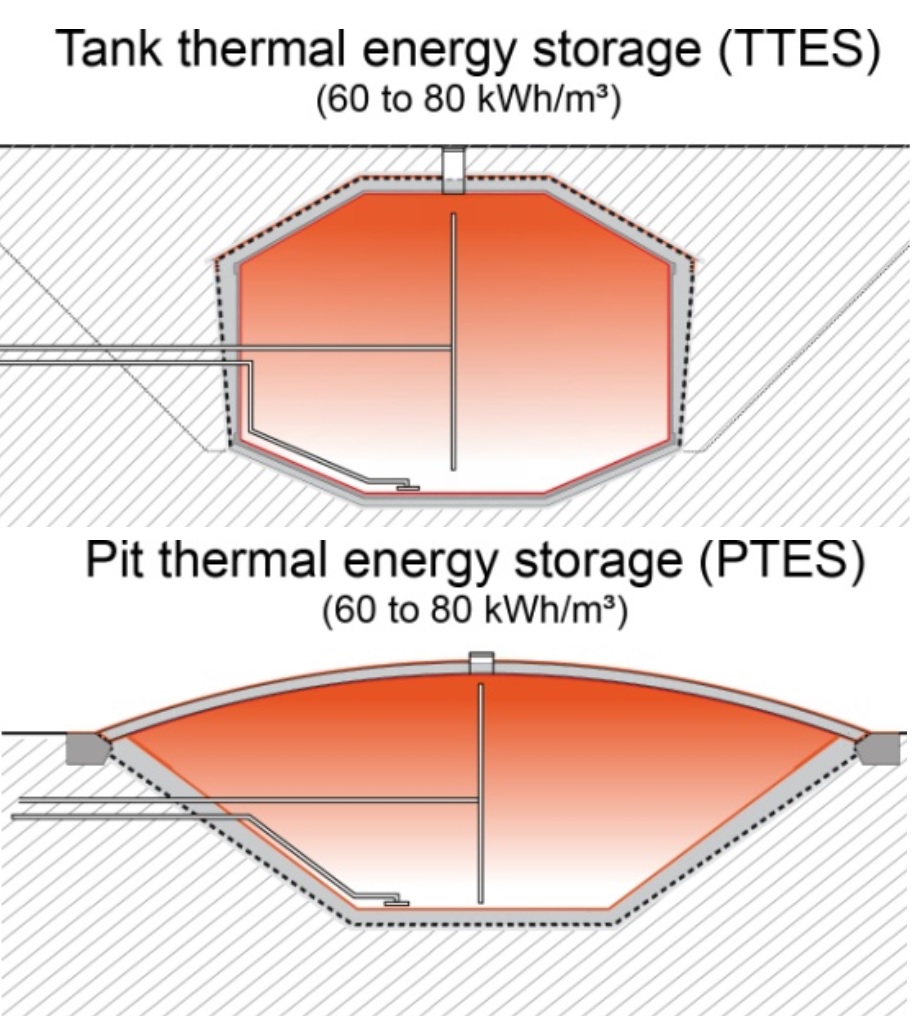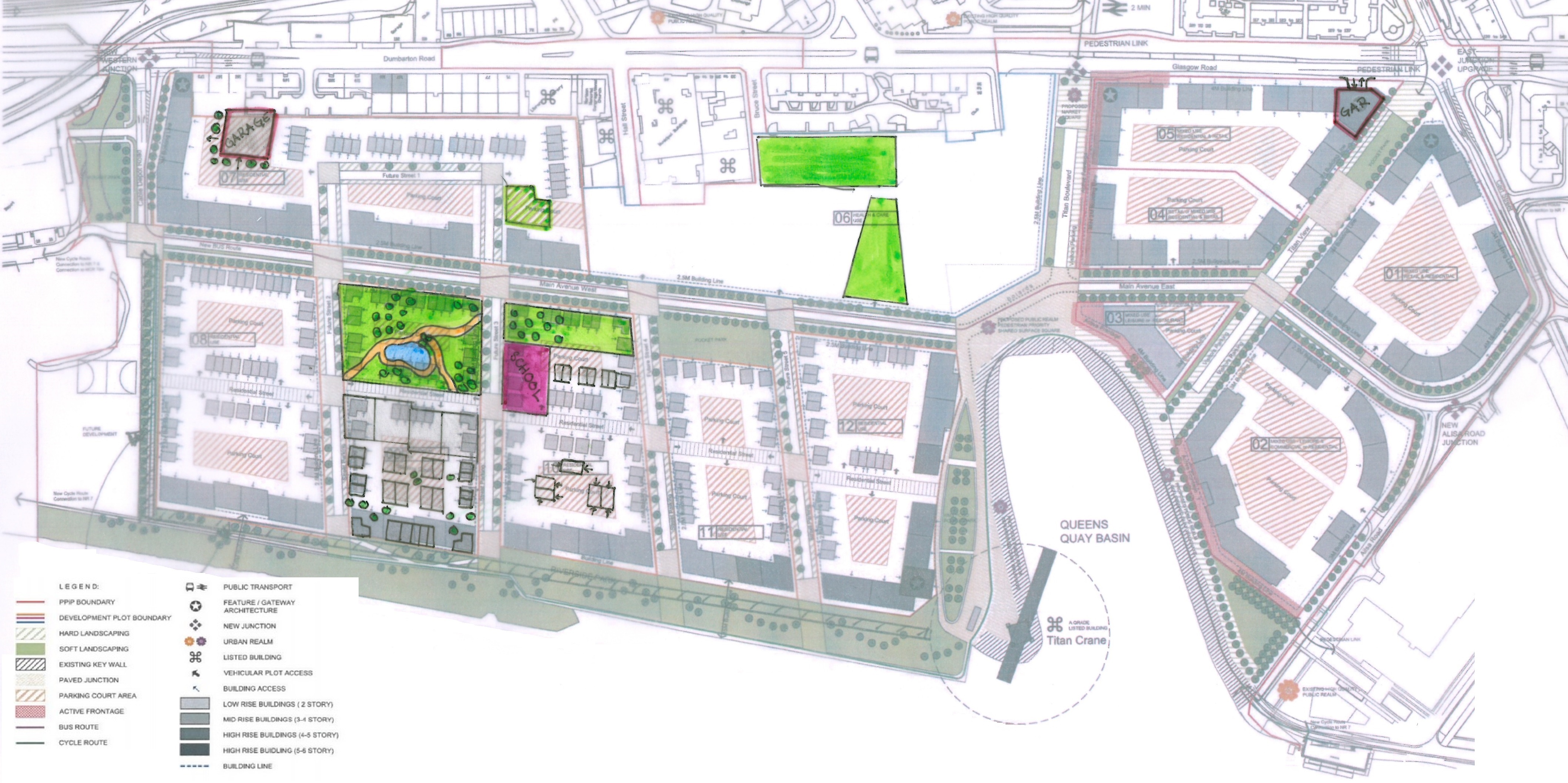Together for the Future
Due to the limited time for the MSc project, some aspects of the project had to be simplified or completely omitted. The following paragraphs summarize and propose further considerations for those who would be interested in using our approach for the waterfront developments or develop it further.
Modelling of the Heat Demand
For the second scenario (CHV), the overall heat demand of the non-residential buildings was scaled down by a factor of 70%, assuming improved energy efficiency of the existing and new build buildings. This assumption may lead to a rather optimistic estimation of the domestic water heating (DHW) demand throughout the year and especially during the summer months, when space heating (SH) demand for the given climate conditions is very low. Consequently, a more accurate approach could be to separately calculate the energy demand for DHW, taking into account the lower temperature regime in the network, and only scale down the SH demand by 70%. This would probably lead to the need for a larger required thermal storage capacity for the same heat pumps and RE inputs, however the CO2 savings compared to the QQB scenario would not change significantly ( expected change: <2% ).
Carbon Intensity Data
It is important to consider the local grid CO2 emissions intensity data, in order to present correct CO2 saving for the given place. Sadly during the study there were only national grid data available, which can be misleading during weather events such as “Beast from the East” when there is expected plenty of wind generation. The regional data only became available part way through the year, so a future analysis could include Scotland specific data (or even postcode specific!).
Thermal Storage
Only very basic insulation of the thermal store was accounted for. The thermal performance of the storage could be improved by thicker insulation and/or burying the tank. Burial of the tank would be recommended unless it would be used as a part of the landscape such as in the Bolzano example.
Feasibility, Sensitivity and Cost Analysis
Doing a feasibility study including a cooling function of the network was out of the scope of this study, due to the significant complexity of estimating cooling loads for such a large number of buildings. It is, however, included in the plans for the Queens Quay development, and will be important in the future due to the climate change, as hot summers are becoming more common even in cold climates.
It would be advisable to carry further sensitivity analysis to wind profiles from different years as these can change drastically year to year. Cost analysis of LTDH compared to HTDH would provide for business a clear and understandable comparison of the costs and benefits of both systems.

Possible buried thermal stores for large systems with the amount of energy which can be stored in such devices [i]
Standards for Sustainable Communities
It may be suggested to look on the overall sustainability of the development as a whole and not only on sustainability of energy usage of separate buildings. One may argue of the price to be paid of such a development, with unsure outcome. However, there are tools and guide lines to help design such developments, which when applied and followed properly may earn “sustainability credits/points” which may help to obtains further grants and other funding. There are two important to mention, the Leadership in Environmental Design Neighborhood Development (LEED-ND) the US sustainable community standard and the UK’s Building Research Establishment Environmental Assessment Method for Communities ( BREEAM-C ). Both of the standards push forward the economic, social and environmental sustainability. The LEED-ND is prioritising the environmental sustainability overall of the rest categories.[1] With BREEAM-C it is important to follow the guidelines from the early stages of the planning of the development, as certifications may not be given if any of the compulsory steps were omitted in the early stages.[2]

A greener development with accordance to BREEAM-C and Walkable Cities [ii]
Electric Vehicles
It could be recommended to deploy electric vehicles (EV) within the development; by EVs it is not meant only cars. There are other vehicles such as e-bikes and/or e-boats which could be included within the development. E-bikes are friendly to casual cyclists and may promote healthier lifestyle of the residents as well as provide a “green” mean of transport. The e-boats could be included in any waterfront development as a “boat-bus” an important connection along the river/coast. Deployment of such vehicles could also provide a balancing mechanism for the growing renewable fraction of the electricity grid. This would mainly work over-night, when there is surplus wind generated electricity, and most of the EVs can be charging and act as a battery storage.